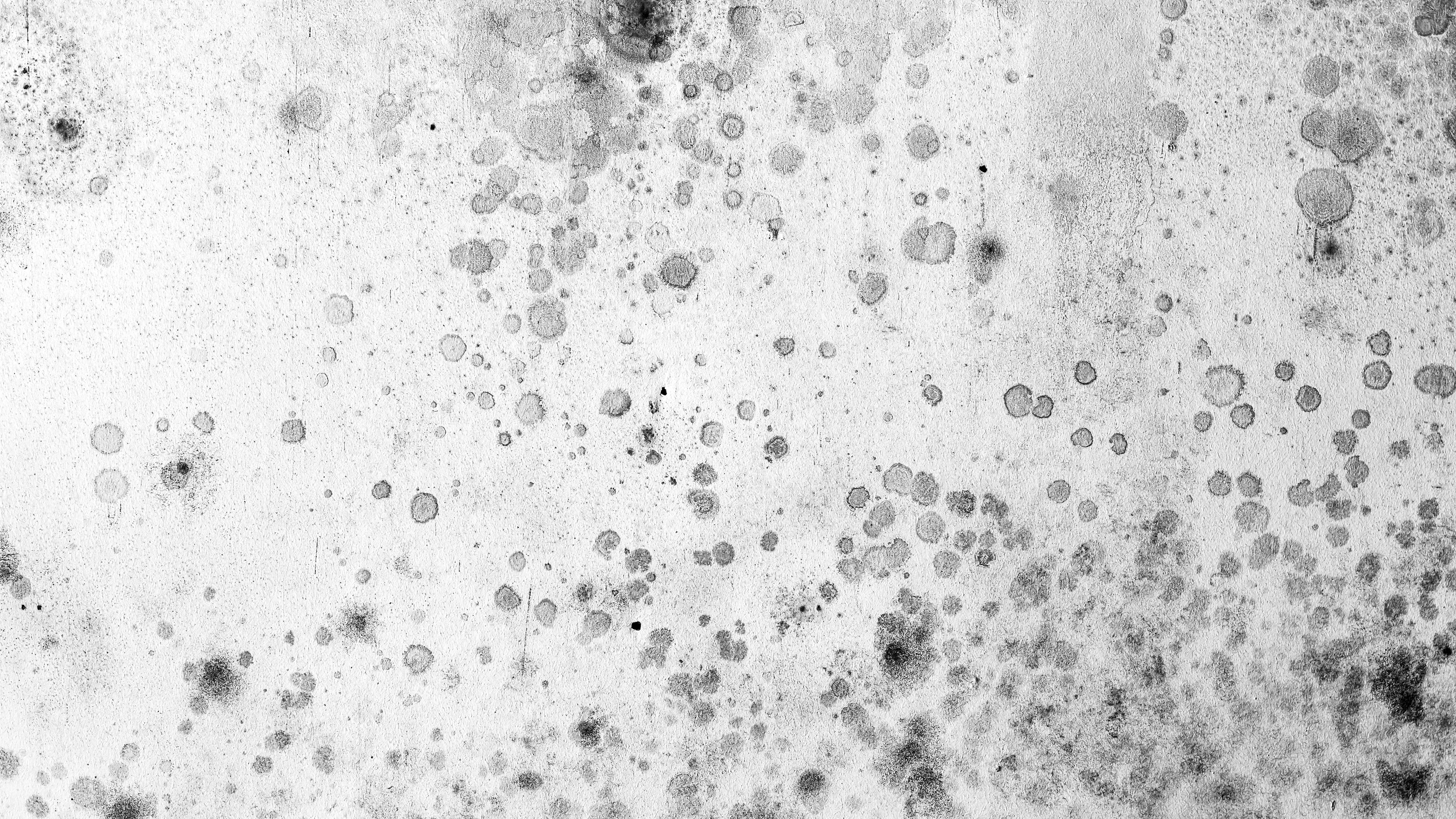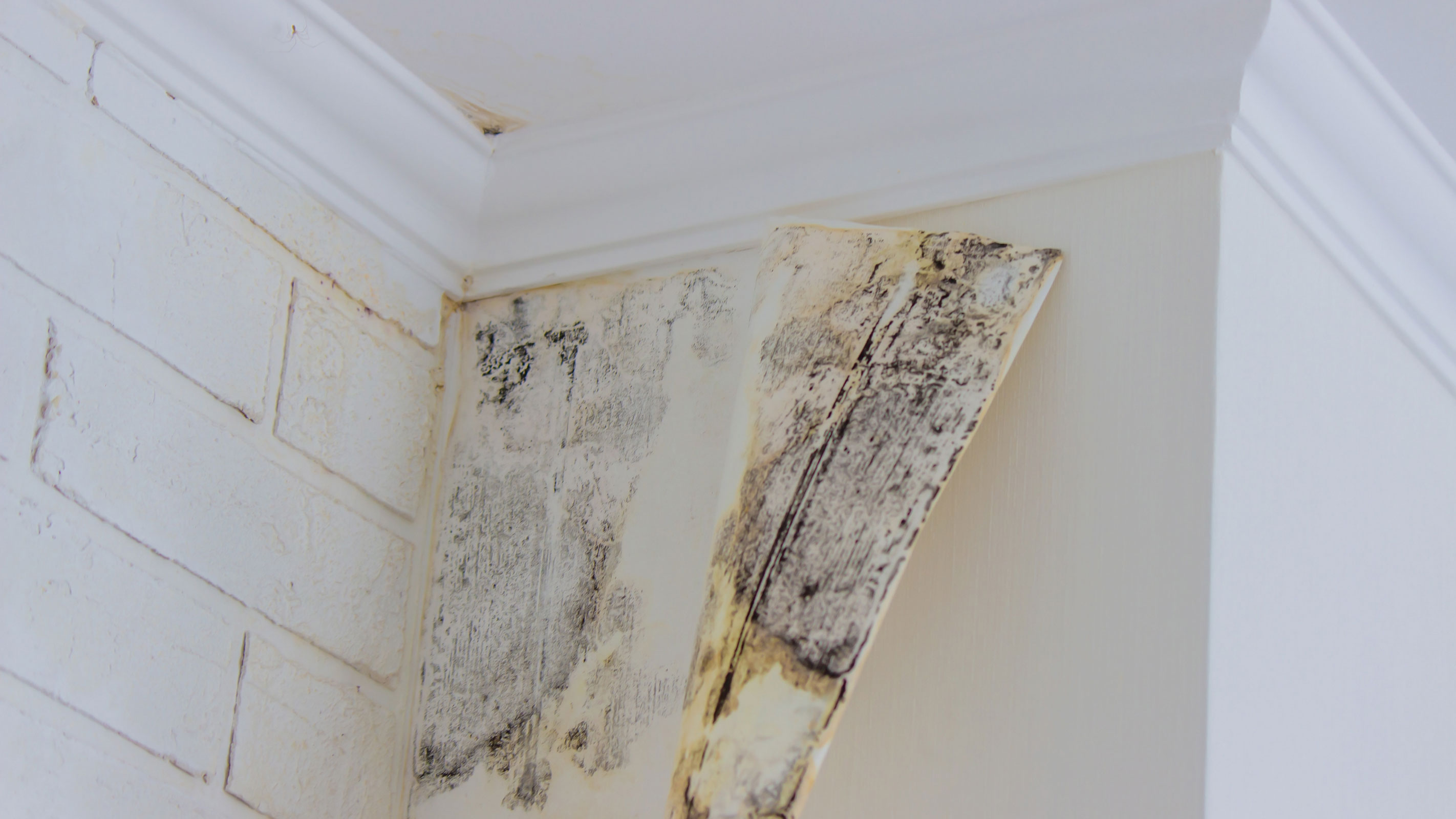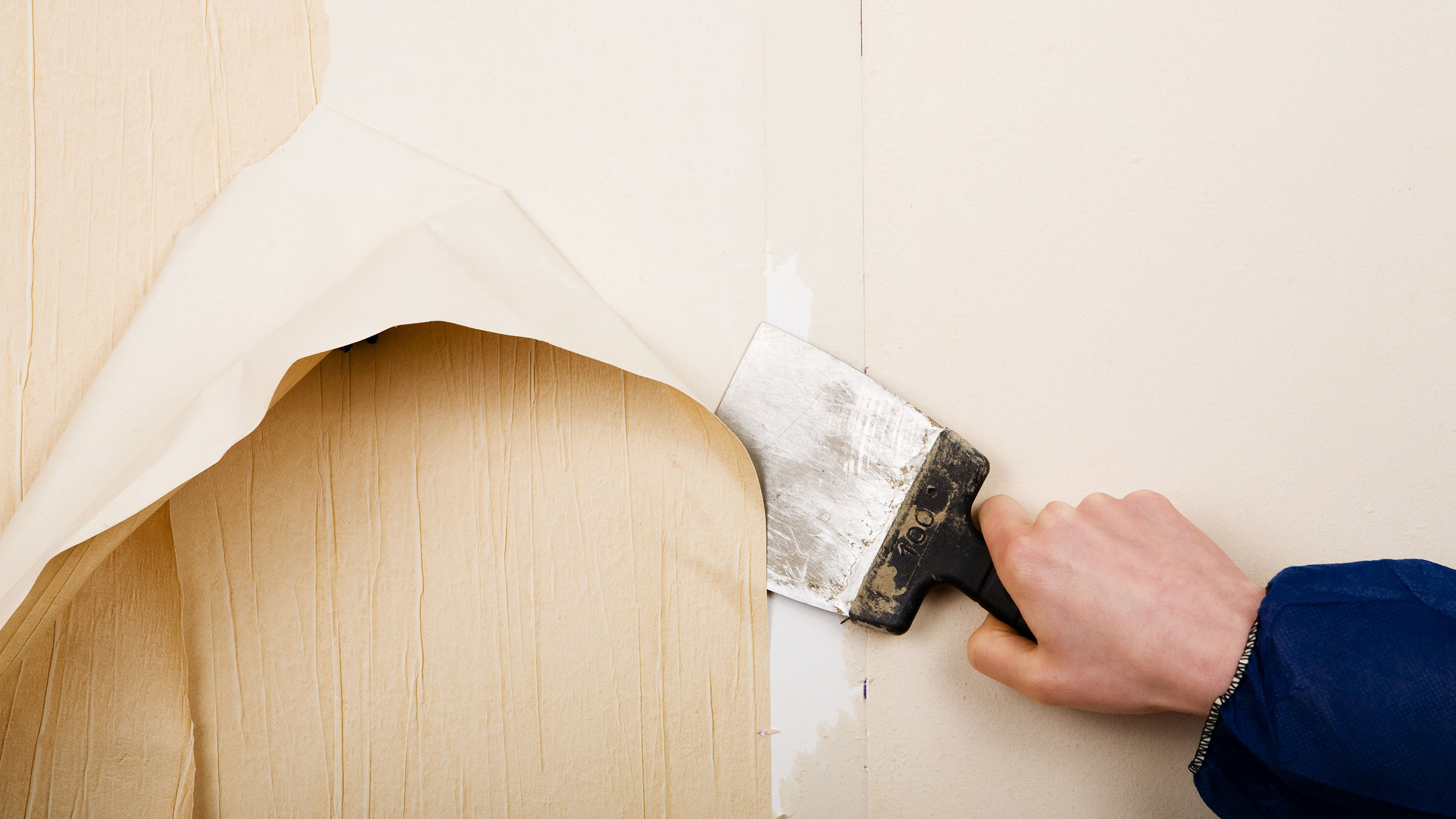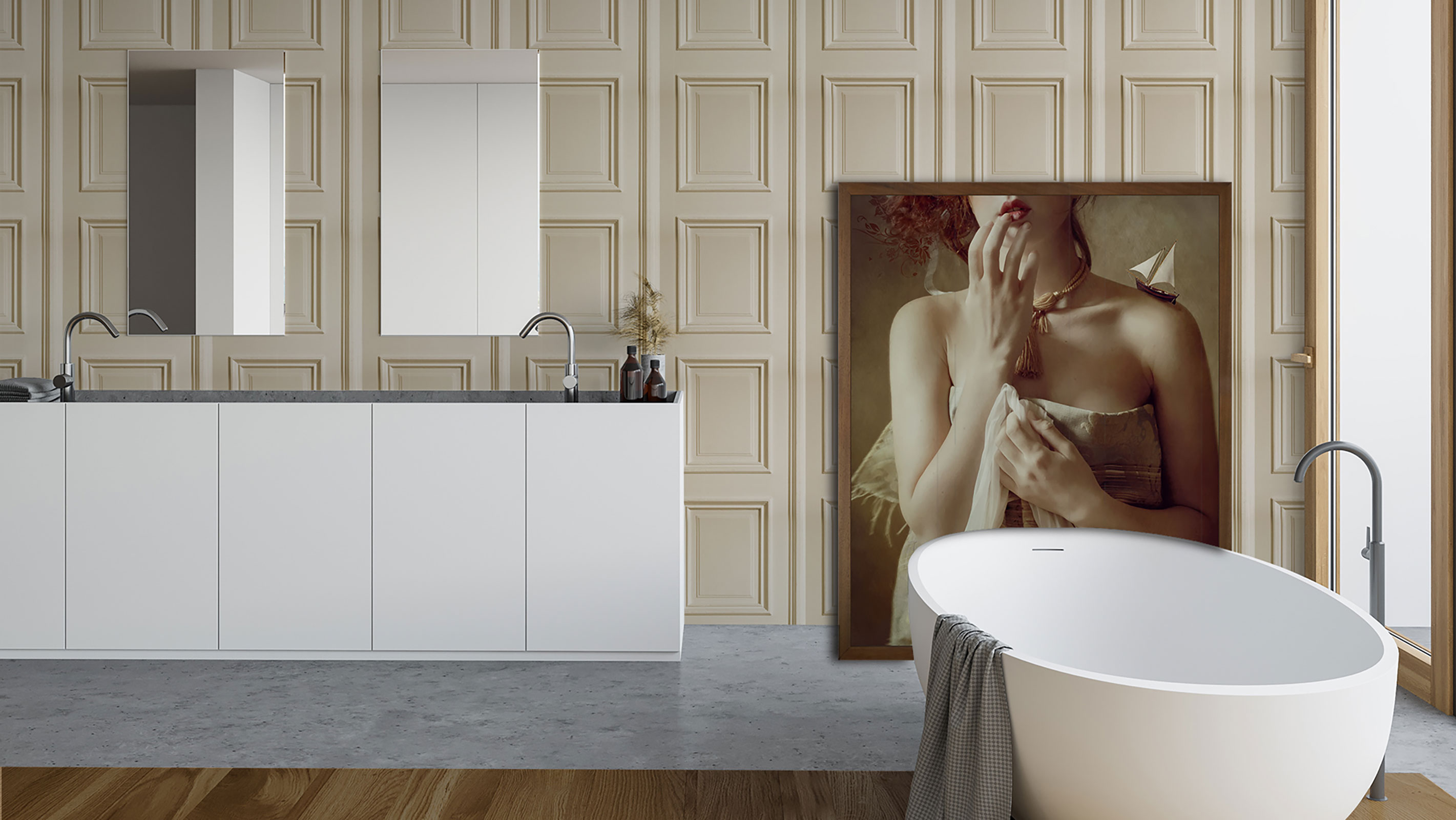What causes mould on wallpaper and how can you remove it?
Discovered mould on wallpaper in your home? Don't panic — we're here to help. In this guide we look at what causes mould, how to remove it from wallpaper and the best ways to prevent it from returning

Mould on wallpaper is not something anyone wants to find in their home — but it is a surprisingly common discovery, both by those living in old properties as well as owners of newer homes.
In the case of wallpaper, it can be a little tricker to deal with than with other types of mould removal. It tends to follow that the more porous a surface, the harder it is to eliminate any kind of stain or mould, especially without damaging the material it has settled on.
In this guide, we take a look at the causes of mould on wallpaper, what to do if you have found it lurking in your home and the steps you can take to prevent it from becoming a recurring problem.
What causes mould on wallpaper?
The causes of mould on wallpaper tend to be the same as those behind mould on windows, walls, ceilings and pretty much anywhere else in the home. These are:
- Excess humidity
- Poor ventilation
- Dirt
- Water ingress
- The use of inappropriate materials such as cement-based plasters in old houses
"Some types of mould are related to too much humidity in the air, whilst others are related to water ingress — perhaps from loose roof tiles, a leaking pipe, ground water or poorly fitting window frames," advises Chris Michael of Meaco. "Condensation is a sign that your home may be susceptible to damp, and you may need to look at ways to improve ventilation and invest in some repairs."
How should I remove mould from wallpaper?
Just as when removing mould from walls, there are several methods you can try to get your wallpaper mould-free once more, some of which take a natural approach, others which require you to pull out all the stops on the chemical front.
If you are dealing with washable wallpaper, you will be in for a far simpler task as you will simply need to use warm soapy water and a sponge to wipe away the mould. Similarly, vinyl and fibreglass wallpapers are easier to clean than traditional, foil and flocked papers, as well as non-woven — you really need to take care that these don't become too wet and tear when cleaning.
Whatever method you choose, it is always advisable to test it out on a small, inconspicuous area of wall first to make sure you aren't likely to discolour or tear the paper.
Before trying out any of the following methods, it is crucial that you dust or vacuum the wall first. Failing to do this will mean any cobwebs, dirt or dust will get spread over the wall when cleaning.
1. Natural ways to remove mould from wallpaper
There are several natural, homemade solutions you can try to remove mould from wallpaper. These are cheaper and safer than those that contain chemicals but, it has to be said, not always as effective on stubborn stains.
You can either combine one cup of water with half a cup of distilled white vinegar or mix one cup of water with a couple of drops of tea tree oil (this can be toxic to pets so use away from them). Decant the solution into a spray bottle and mist the affected area, before using a sponge to carefully wipe the walls, using circular motions and being careful not to soak the wallpaper.
Use a clean, damp sponge to remove the solution and let it air dry before repeating the process until the mould has been eliminated.
This a good, gentle approach for those looking at how to remove mould from walls without damaging paint.

2. Try a bleach solution to remove mould
Household bleach can be something of a lifesaver when it comes to removing all kinds of pesky stains — mould and mildew included.
Try combining a quarter of a cup of bleach with one cup of water. Lightly spray or use a sponge to apply the solution to the stains before leaving it to get to work for around five minutes. You can then wipe it away with a clean cloth or sponge, repeating the process, carefully, until the stains have disappeared.
3. Use a professional mould-removal product
There are several products out there designed to remove mould from all kinds of surfaces, including walls, windows and even those directed at people looking at how to remove black mould from silicone sealant.
It is actually quite rare to find chemical mould removers that state they are suitable for regular wallpaper, although many people do report impressive success using them (myself included!). If you decide to take the risk then do be sure to try the product out on a small, hidden test area of wallpaper (perhaps behind a wardrobe or similar) before saturating your entire wall with the stuff — and always follow manufacturer's instructions.
You will also need to ensure you ventilate the room well while using these products, wear gloves and cover carpets. You might also like to consider wearing a dust mask.
Products that come with some of the best reviews include Dettol Anti-Bacterial Mould and Mildew Remover, as well as HG Mould Remover Spray and Dryzone Mould Remover Scrub-Free Formula, all available from Amazon.
4. Remove the wallpaper and start over
It is quite common to find mould on wallpaper but not on walls behind — in which case it hasn't spread there yet. Where you do find mould behind wallpaper, it will be best to strip your wallpaper, address the cause and start afresh.
Stripping wallpaper will also be the best solution in cases where the paper has become very badly affected by mould.

5. Painting over mould stains on wallpaper
Even once the mould itself has been removed from wallpaper, you may well find you are left with some pretty unsightly stains.
If you are certain that the mould was only on the wallpaper and not on the wall behind, you might like to consider painting over wallpaper as an alternative to stripping it off completely.
Do bear in mind that if you have a wallpaper with a vinyl finish or that has been glossed previously, painting straight over the paper with emulsion won’t work well. You’ll need a specialist undercoat or primer to make sure the top coat adheres to the wall properly.
Try Zinsser Wallpaper Cover-Up paint from Amazon, an all-in-one primer that covers strong patterns, blocks stains that may be lurking and helps prevent blistering.
Can you buy anti mould wallpaper?
If you have decided to remove your wallpaper altogether and are ready to start again, you may well be wondering if there are certain products that are less likely to be affected by mould than your old wallpaper.
While there are not too many 'anti mould' wallpapers out there, for many people, opting for waterproof wallpaper, which is also often billed as kitchen or bathroom wallpaper, is a good idea if you live in a house susceptible to mould, damp and condensation as it is more resistant to moisture and easier to clean than regular or fabric-based papers.
Alternatively (or even as well as) you should seriously consider using a mould resistant wallpaper paste, such as M & V Multi Purpose Wallpaper Adhesive Paste from World of Wallpaper.

How do I prevent mould on wallpaper returning?
Once you have removed the mould from your wallpaper you will obviously be keen not to have to repeat the process and so it is crucial that you put measures in place to prevent mould from forming in the first place.
"If you’re finding it difficult to permanently remove mould, you’ll need to look into the root causes," explains Meaco's Chris Michael. "If there are fundamental problems in your home that are causing mould or mildew, you’ll need to get them sorted out by a professional. This might include damp from a leaking roof or pipe, condensation or problems with poor insulation or kitchen and bathroom fittings.
"On a day-to-day basis, you can fight the occurrence of mould with better ventilation, a dehumidifier to keep the air in your rooms less humid, regular cleaning and an eagle eye for the appearance of anything that looks like mould," continues Chris.
In order to prevent mould from rearing its very ugly head again consider taking the following steps:
- Reduce humidity levels: If you are wondering how to reduce humidity in a house there are a number of simple ways to do so. "You can reduce the moisture in the affected room in a number of ways, including making sure you are ventilating the room properly — open windows when cooking, for example," says Chris Michael. "You can also use a dehumidifier, which is designed to suck the moisture out of the air, reducing humidity drastically."
- Keep your home spotless: Mould loves dirt so keeping your home as clean as you possibly can should help in the fight against it.
- Fix the causes of damp: Damp leads to mould so by understanding what causes damp and putting the issues right, your mould problems should also disappear. Leaks and non-breathable materials, as well as severe condensation can all cause damp.
Get the Homebuilding & Renovating Newsletter
Bring your dream home to life with expert advice, how to guides and design inspiration. Sign up for our newsletter and get two free tickets to a Homebuilding & Renovating Show near you.
Natasha was Homebuilding & Renovating’s Associate Content Editor and was a member of the Homebuilding team for over two decades. In her role on Homebuilding & Renovating she imparted her knowledge on a wide range of renovation topics, from window condensation to renovating bathrooms, to removing walls and adding an extension. She continues to write for Homebuilding on these topics, and more. An experienced journalist and renovation expert, she also writes for a number of other homes titles, including Homes & Gardens and Ideal Homes. Over the years Natasha has renovated and carried out a side extension to a Victorian terrace. She is currently living in the rural Edwardian cottage she renovated and extended on a largely DIY basis, living on site for the duration of the project.

